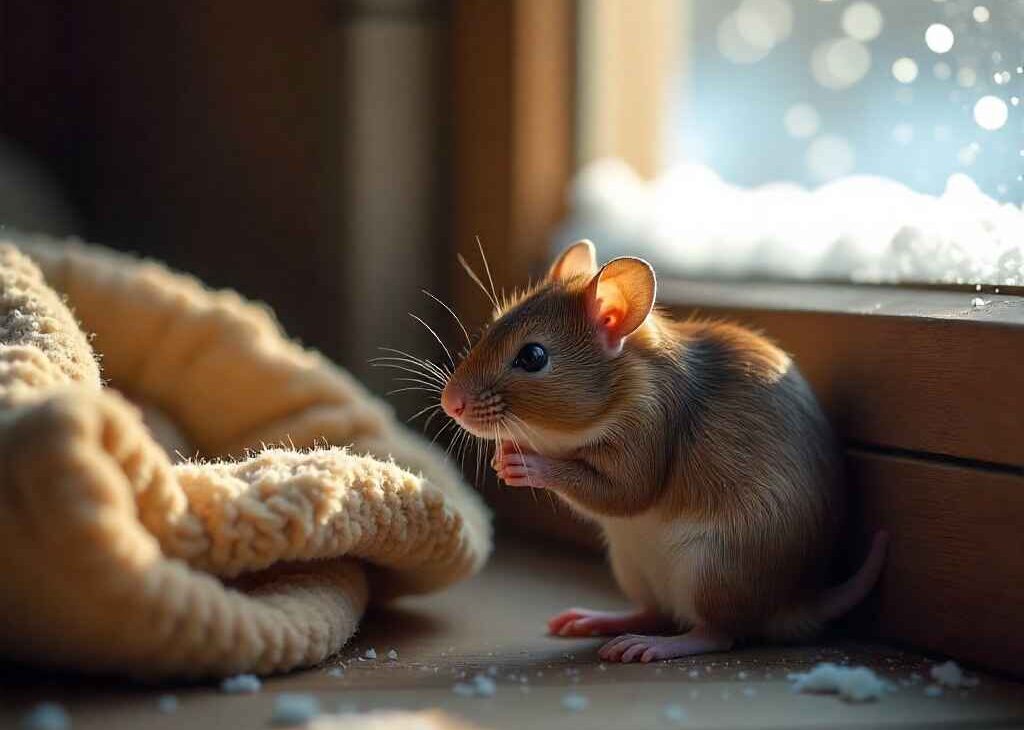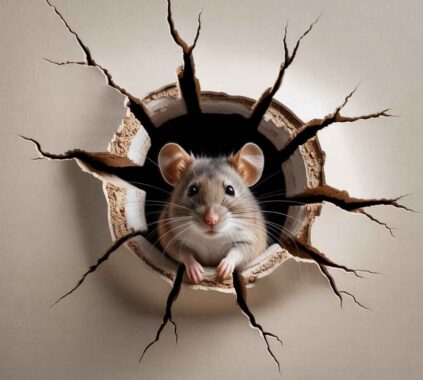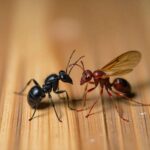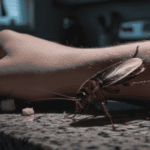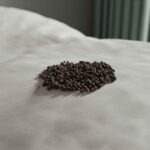Table of Contents
When the temperature drops and snow starts to fall, many people wonder: do mice hibernate like bears or bats? It’s a fair question. After all, you rarely see these little creatures running across the yard in the middle of winter. But the truth might surprise you, mice don’t hibernate at all. Instead, they stay fully awake, constantly searching for warmth, shelter, and food.
In this in-depth guide, you’ll discover how mice survive cold weather, where they hide, and what you can do to prevent an infestation. We’ll also explore related questions like do field mice hibernate, how long do mice hibernate, and what is the coldest temperature mice can survive.
1. Do Field Mice Hibernate?
One of the most common misconceptions about mice is that field mice hibernate during winter. In reality, they don’t. Field mice, also called wood mice, stay active year-round. Instead of sleeping through the cold, they change their behavior to survive.
When the weather is mild, field mice live outdoors in grassy fields, gardens, and wooded areas. They build small burrows underground, collecting seeds and grains during the summer. However, when temperatures drop, they move closer to homes, sheds, and barns. These spaces provide two things mice need most: warmth and food.
Field mice are expert hoarders. Before winter begins, they gather and hide food in small storage areas. These tiny stockpiles allow them to survive when fresh food becomes scarce. So, if you see signs of shredded paper or small piles of seeds in your garage or shed, you might be hosting a few unwanted guests.
2. Do Mice Hibernate in the House?
If you hear scratching noises behind your walls, you might wonder: Do mice hibernate in the house? The answer is simple: they don’t hibernate, but they absolutely love staying inside homes during the winter months.
Mice can squeeze through holes as small as one-quarter of an inch. Once inside, they find cozy spots like wall voids, attics, crawl spaces, or basements. These areas are warm, safe from predators, and close to food sources.
Inside the house, mice stay active all winter long, eating small bits of food, chewing insulation, and breeding. In fact, a single pair of mice can produce dozens of babies in just a few months. That means what starts as a minor problem in November can turn into a major infestation by spring.
Common signs that mice are active in your home include:
- Droppings near food storage or along walls
- Gnaw marks on furniture or electrical wires
- Shredded fabric or paper nests
- Small scratching sounds at night
To prevent them, inspect your home carefully. Seal cracks, store food in airtight containers, and keep your kitchen clean. Mice are persistent, but they’re also opportunists; they’ll only stay where conditions are comfortable.
3. Do Mice Hibernate in the Winter?
While other animals sleep through winter, mice stay wide awake. In fact, cold weather often drives them indoors. So, instead of asking “Do mice hibernate in the winter?” it’s more accurate to ask how mice survive the winter.
Mice are resourceful survivors. As soon as the air turns chilly, their instincts kick in. They start searching for three essentials: warmth, shelter, and food. If they find all three inside your home, they’ll settle in quickly.
During the winter months, mice:
- Build nests from shredded materials like insulation or paper
- Hide during the day and search for food at night
- Travel along baseboards or pipes for safety
- Breed continuously since indoor conditions stay warm
Winter doesn’t slow them down; it actually makes them more determined. That’s why professional pest control companies often report the highest rodent activity between October and February.
4. Do Rats Hibernate?
Just like mice, rats don’t hibernate either. Instead, they adapt their living habits to survive. There are two main types of rats you might encounter during the winter: Norway rats and roof rats.
- Norway rats prefer burrowing underground. They dig tunnels under buildings, decks, or woodpiles to create warm, hidden nests.
- Roof rats, on the other hand, are excellent climbers. They seek out attics, rafters, and tree branches to build their nests above ground.
Both types of rats stay active throughout the cold season, foraging for food and nesting materials. They’re intelligent creatures, capable of finding food sources you might overlook, such as pet food bowls, garbage bins, or compost piles.
So, if you hear noises in your attic or see droppings near the basement, remember rats are not sleeping. They’re awake, alert, and multiplying fast.
5. How Long Do Mice Hibernate?
Since mice don’t actually hibernate, they don’t have a set period of dormancy. However, during extreme cold, they may reduce activity slightly to conserve energy. This short rest period can be mistaken for hibernation.
Outdoors, mice will stay hidden in their burrows, only coming out to gather food occasionally. Indoors, they continue moving around at night. This is why homeowners often hear squeaks or scratching sounds when the house is quiet.
The key takeaway here is simple: mice are active all year long. If they’ve found a warm and safe environment, such as your home, they’ll stay indefinitely unless you take steps to remove them.
6. Do Mice Hibernate in Summer?
It might sound strange, but some people also ask, Do mice hibernate in summer? The answer is still no. Summer is actually the busiest season for mice. Warm weather means more food sources, easier nesting conditions, and rapid breeding.
A single female mouse can have up to ten litters per year, with five to twelve babies each time. So by the time winter arrives, a small summer population can explode into dozens of mice.
If you notice unusual activity in your home during summer, such as scratching in the attic or small droppings near stored items, it’s a good idea to act quickly. Preventive pest control before winter can save you from a full-blown infestation later.
7. What Is the Coldest Temperature Mice Can Survive?
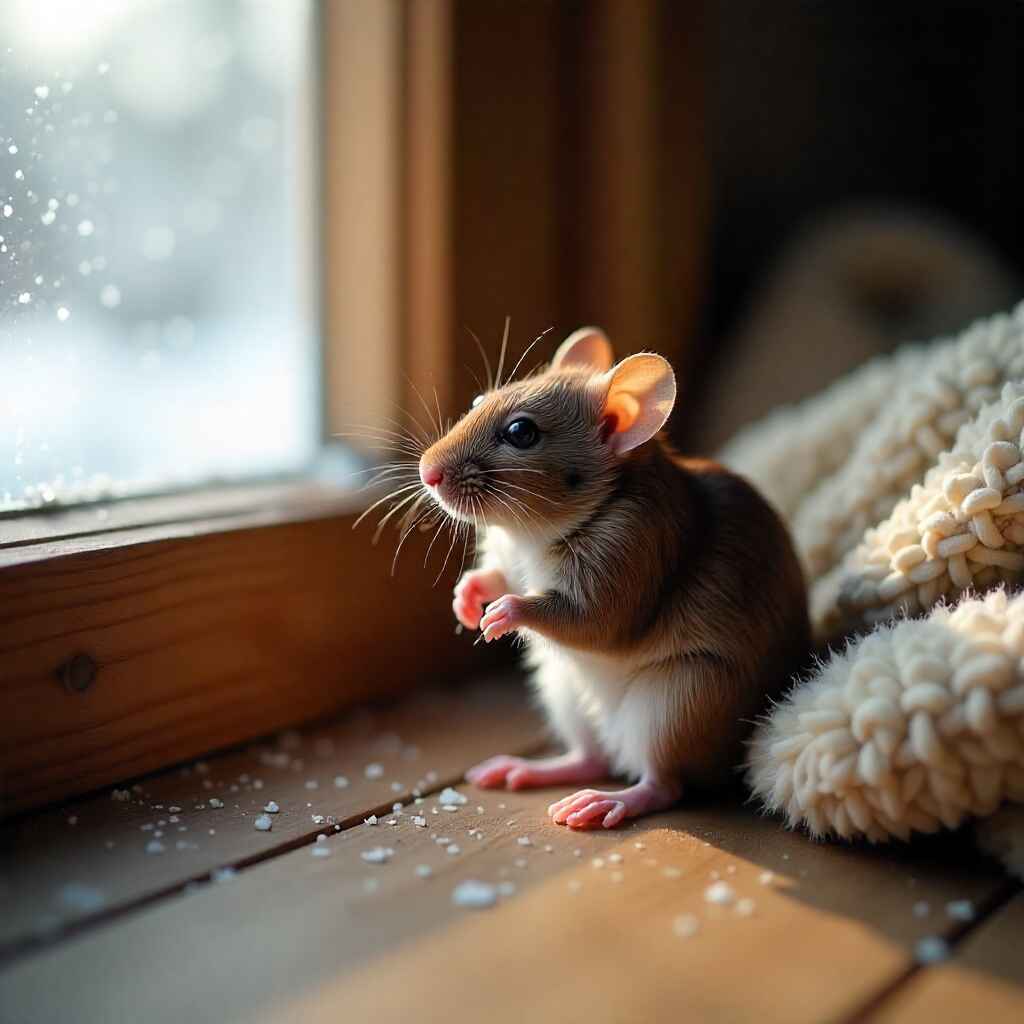
Mice are small, but they’re surprisingly tough. Still, they have their limits. Generally, the coldest temperature mice can survive is around 30 to 32 degrees Fahrenheit. Below freezing, they struggle to maintain body heat and can die if exposed for too long.
That’s why, when the temperature drops, they seek insulated spaces. In nature, they might burrow into the ground or hide under logs and leaf piles. In cities or neighborhoods, they turn to garages, attics, and homes.
Even if it’s just a few degrees warmer inside, that’s enough for them to survive. Once they find a warm spot, they’ll build nests out of soft materials to trap body heat. This ability to adapt is what makes mice one of the most persistent pests during winter.
8. Do Mice Migrate?
Some animals migrate to escape cold weather, but mice don’t migrate. Instead, they make local movements within their environment. As temperatures fall, they move from outdoor areas to indoor shelters.
In rural settings, mice might move from open fields to barns or sheds. In urban areas, they often relocate from gardens or garages straight into houses. These short-distance movements are driven by survival needs, not long migrations like birds.
This behavior explains why you suddenly notice signs of mice indoors in the fall. They’re not traveling far; they’re just moving from one part of their habitat to another, following warmth and food.
9. Step-by-Step: How to Keep Mice Away During Winter
Since mice don’t hibernate, your best defense is prevention. Here’s a simple step-by-step guide to help you keep your home rodent-free:
Step 1: Seal Entry Points
Inspect your home carefully. Look for cracks, gaps, or holes larger than a quarter inch. Seal them using steel wool, caulk, or metal mesh. Pay special attention to gaps around doors, vents, and utility pipes.
Step 2: Remove Food Sources
Store dry goods, pet food, and birdseed in sealed containers. Don’t leave food or crumbs on counters. Clean kitchen floors regularly, including under appliances.
Step 3: Declutter and Clean
Mice love clutter. Keep basements, attics, and storage areas tidy. Dispose of old boxes, paper, and fabric that could be used as nesting material.
Step 4: Maintain the Yard
Trim bushes and branches near your home’s exterior. Keep firewood stacked away from walls. Clean up fallen leaves, fruit, and debris that could attract rodents.
Step 5: Use Traps or Call a Professional
If you suspect an infestation, place traps in areas with high activity, such as near walls or under sinks. For larger problems, contact a licensed pest control service for safe and effective removal.
FAQS:
1. Why do mice suddenly disappear?
They don’t vanish or do mice hibernate; they just move where food or warmth is easier to find.
2. How many mice are in your house if you see one?
If you see one, more are likely hiding since do mice hibernate is false and they stay active year-round.
3. What’s the best way to get rid of mice?
Seal entry points and set traps. Because do mice hibernate is untrue, control must be ongoing.
4. What month do mice come in the house?
They usually enter from August to November since do mice hibernate isn’t true and they seek warmth.
5. Will mice go near sleeping humans?
Rarely, but if food is nearby, they might. Remember, do mice hibernate is false — they stay active at night.
6. How do I permanently get rid of my mouse?
Keep your home sealed, clean, and food-free. Since do mice hibernate is a myth, stay alert year-round.
10. Final Thoughts
So, do mice hibernate? The answer is a definite no. Mice remain active all year long, especially during winter when they seek warmth and food indoors. They don’t disappear in the cold; they simply move closer to us.
Understanding their habits is the first step toward prevention. Whether it’s field mice, house mice, or rats, all rodents share the same goal: survival. By sealing entry points, keeping your home clean, and removing food sources, you can make your space far less appealing to these tiny invaders.
If the problem persists, don’t hesitate to call a professional pest control expert. Stopping an infestation early can save you from property damage, health risks, and countless winter headaches.

